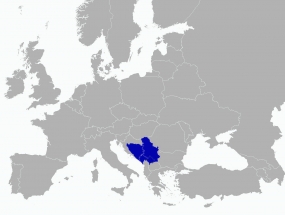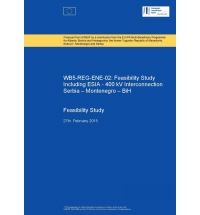400 kV Interconnection Serbia – Montenegro – BiH; Feasibility & ESIA Assessment Study
client: WYG International Ltd. (United Kingdom) (Phase I and IIa), COWI A/S –on behalf of the COWI-IPF Consortium 2 (Denmark) (Phase IIb)
type: Feasibility Study (Transmission, Generation, Market)
finishing date: October 2014 (Phase I and IIa), February 2015 (Phase IIb)
team: Snezana Mijailovic - Project Manager, Slobodan Markovic - Transmission Planning engineer, P. Miksa - Network System Analyst (senior), T. Martinovic - Network System Analyst (junior), D. Orlic – Market System Analyst (senior)
The scope of this Feasibility Study and Environmental Social Impact Assessment is to develop a 400kV connection between Serbia, B&H and Montenegro, together with the upgrade of the 220kV network in the vicinity. The FS takes into consideration both local rules governing system operation (TSO Rules and Grid Code) as well as the ENTSO-E Operational Rules and the Guideline for Cost Benefit Analysis of Grid Development Projects.
The further development of electricity market and networks in the region – Bosnia and Herzegovina (BA), Montenegro (ME) and Serbia (RS), implies the need for the further strengthening of the internal transmission networks as well as strengthening of the respective transmission interconnection lines.
Undertaking this FS, and subsequently implementing the project, will result in:
- A structured approach to justifying, constructing and developing this 400kV transmission connection, and regional transmission system improvements to facilitate the transfers to Italy from South East Europe and vice-versa
- Improved net transfer capacity to facilitate anticipated load and transit growth, new conventional and renewable generation connections, in the context of transmission capacity increase in Serbia, Montenegro and B&H, and in the South East Europe region generally
- Improvement of the stability and reliability of the regional network, leading to improvements in the overall security of supply.
- A decrease of the technical losses in the transmission system
- Improved quality of electricity supply (including normalised voltage levels and stabilized load flows)
- Supporting the potential to develop the regional energy market in South East Europe and creating trading opportunities between SEE countries
- Reducing the cost of providing reserve capacity, system services and improving the ability to provide mutual emergency and balancing support.
According to the Scope of work it is necessary to perform the following analyses:
- Definition of scenarios - network topologies
- Network and Market based assessments methodologies preparation
- System modelling and data collection
- System studies
- Market simulations
- Assessment of the results of the system studies for each scenario examined
- Compile the results to choose optimal scenario
- A Technical report and project implementation plan preparation
- Preparation of the Final Report


